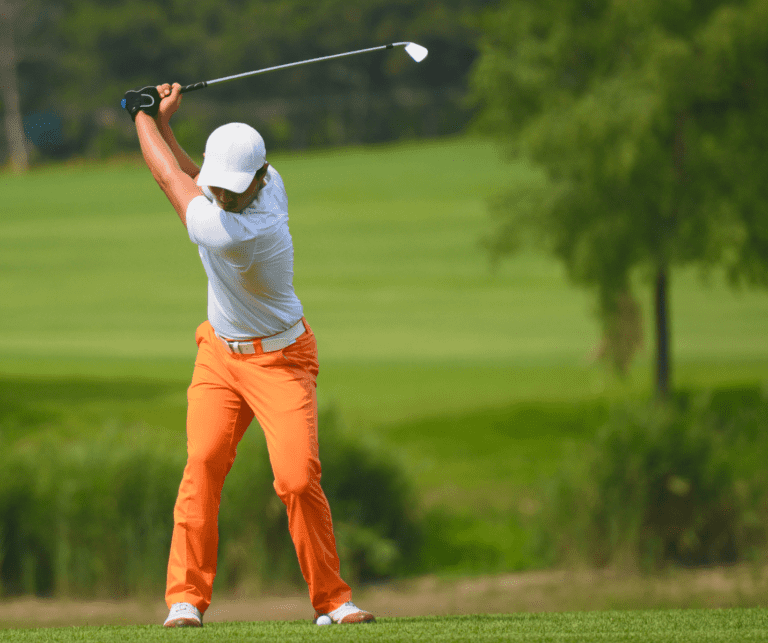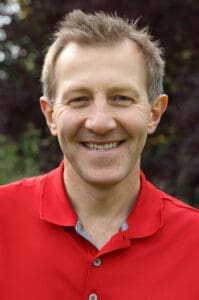
Golf Psychology Tips: Case Study – Supporting a Professional Golfer Go Really Low
Many golfers can become uncomfortable when they look set for a good finish or score
The Client:
A 24 year old talented professional golfer based in Northern England who had played golf since he was 9 years old.
The Challenge:
The client had a disrupted season due to an injured wrist caused by over-practicing as he had a love for hitting balls on the range. He’d been back playing for 2 months when I received a call. He was a little frustrated with his form when he had performed in PGA events and on different professional tours. He felt that he was practicing very well and was performing in his words “okay” in events however he was struggling to turn 71’s into 69’s or 68’s into 64’s.
The Objectives:
- To support the golfer so that he didn’t get too far ahead of himself.
- Help him understand how to reflect and learn from his mistakes.
- Change the story in his head about going very low.
- Help him build on fast starts and continue the positive momentum.
- Help him trust his skills and play fearlessly no matter what shot or situation he faced.
The Process:
We met 5 times over a 2-month period, in total for 10 hours. The sessions included face to face on course and short game work, zoom strategy sessions, zoom sessions whilst he was on the range, short game area and putting green.
The sessions included:
- A detailed needs analysis where we discussed his golf and sporting background, what his week looked like, his golfing goals, his lifestyle, his support system and mental game challenges.
- A discussion with his coach and caddy.
- Pre-shot routine drilling in practice.
- On course analysis of his pre-shot routine and decision making process.
- Visualisation and golf hypnosis exercises to help him overcome his fears.
- Mindfulness and grounding exercises to help him stay present in the moment.
- Analysis and refinement of the narrative he was telling himself.
- We also used process goals during his practice and for 8 rounds that he played in different tournaments. The process goals changed during the course of the sessions as you’ll see in these diagrams.
On Course Process Goals
Process Goal | Round 1 | Round 2 | Round 3 | Round 4 |
Remaining present by practicing mindfulness and grounding exercises |
|
|
|
|
Hole 1 | Y | Y | Y | Y |
Hole 2 | Y | Y | N | Y |
Hole 3 | Y | Y | Y | Y |
Hole 4 | Y | Y | N | Y |
Hole 5 | N | Y | Y | Y |
Hole 6 | Y | Y | Y | N |
Hole 7 | N | Y | Y | Y |
Hole 8 | Y | Y | Y | Y |
Hole 9 | Y | N | Y | Y |
Hole 10 | Y | N | Y | Y |
Hole 11 | N | N | Y | N |
Hole 12 | Y | Y | N | Y |
Hole 13 | N | Y | Y | Y |
Hole 14 | N | N | Y | Y |
Hole 15 | Y | Y | Y | Y |
Hole 16 | Y | Y | Y | Y |
Hole 17 | N | Y | N | Y |
Hole 18 | N | Y | Y | Y |
Total | 11 | 14 | 14 | 16 |
++ Note on some occasions he was unable to practice the grounding or mindfulness exercises because the opportunity didn’t present itself. He distracted himself by talking to his caddy or playing partners.
Process Goal | Round 5 | Round 6 | Round 7 | Round 8 |
Trusted process / preshot routine on all shots on the hole (Y/N) |
|
|
|
|
Hole 1 | N | Y | Y | Y |
Hole 2 | N | Y | Y | Y |
Hole 3 | Y | Y | N | Y |
Hole 4 | N | Y | Y | Y |
Hole 5 | Y | N | Y | Y |
Hole 6 | Y | N | Y | Y |
Hole 7 | N | Y | N | Y |
Hole 8 | N | N | Y | Y |
Hole 9 | Y | Y | Y | N |
Hole 10 | Y | Y | Y | Y |
Hole 11 | N | Y | N | Y |
Hole 12 | N | Y | N | Y |
Hole 13 | N | N | Y | Y |
Hole 14 | Y | Y | Y | Y |
Hole 15 | N | Y | Y | Y |
Hole 16 | N | N | Y | Y |
Hole 17 | Y | Y | Y | Y |
Hole 18 | Y | Y | Y | Y |
Total | 8 | 13 | 14 | 17 |
Example of process goals and how he used them in practice.
Process Goal | Short Putt Test | Short Putt Test | Short Putt Test | Distance Putting Test |
Trusted process / preshot routine on putts during skills challenge (Y/N) |
|
|
|
|
Putt 1 | Y | Y | Y | Y |
Putt 2 | Y | Y | Y | Y |
Putt 3 | Y | Y | Y | Y |
Putt 4 | N | Y | Y | Y |
Putt 5 | Y | Y | Y | Y |
Putt 6 | Y | Y | Y | Y |
Putt 7 | Y | N | Y | Y |
Putt 8 | N | Y | Y | Y |
Putt 9 | Y | Y | Y | Y |
Total | 7 | 8 | 9 | 9 |
The Outcomes:
- Gradually over time the client got more comfortable being mindful. Taking in the surroundings, placing his attention in his body and performing the grounding exercises / mini stretches.
- He was very clear now what his performance routines should look like before events so that he was more relaxed.
- He found the visualisation exercises that we developed very helpful and they became a fixture in how he practiced given his injury and concerns over practicing too much.
- His pre shot routine was simplified, faster yet more precise.
The Conclusion
- The professional golfer went on to shoot 63 and a 64 during the time we worked together which meant he won 2 tournaments.
- His bad rounds were also improved.
- He felt that his rounds had become easier mentally, he was no longer drained after longer events.
- He was able to concentrate better for longer periods.
- He was enjoying his golf more.
- He was a better person to live with off the golf course.
If you enjoyed reading this case study and would like to learn more about how I could help you and your golf career why not get in touch or sign up to the Mental Edge for regular tips and advice.
Or if you found this article helpful, please share it with your friends, team-mates, parents or coaches. You can also join our online community – THE SPORTS PSYCHOLOGY HUB – for regular Sports Psychology tips, podcasts, motivation and support.

Best Wishes
David Charlton
Online Golf Performance Psychologist who supports many golfers around the world from the USA, United Kingdom, Ireland, United Arab Emirates, South Africa, Australian and New Zealand, using ONLINE Video Conferencing.
Managing Director – Inspiring Sporting Excellence, Host of Demystifying Mental Toughness Podcast and Founder of The Sports Psychology Hub. With over a decades’ experience supporting athletes, coaches, parents and teams to achieve their goals, faster.
Helping Children Overcome Fear: A Parent’s Guide to Bravery & Calm
Conversations with Kids: A Parent’s Guide to Helping Children Overcome Fear and Mental Blocks For parents and guardians where we give you prompts so that you can have more meaningful conversations with your children to help them build key characteristics such as mental toughness, resilience, confidence, creativity, focus and so on. A Question for your
Case Study: Helping a Young Trampolinist Overcome Mental Blocks with Backward Skills
Case Study: Helping a Young Trampolinist Overcome Mental Blocks So That She Can Perform Backward Skills With Trust This case study explores the journey of Olivia (pseudonym), a talented 10-year-old trampolinist experiencing fear, hesitation and mental blocks when working on backward moves. An issue common among young trampolinists and gymnasts. Over several weeks, we worked
BOOK REVIEW: How the Body Knows Its Mind – What Young Athletes Can Learn About Performing Under Pressure
Book Review – How the Body Knows Its Mind by Sian Beilock Introduction: Why This Book Matters for Young Athletes Today For children and young athletes, sport is becoming faster, more competitive, more public, and more emotionally demanding than ever. Whether they’re transitioning into new sports or squads, experiencing professional contracts for the first time,
For Sports Parents: ADHD in Sport: Helping Young Athletes Thrive
Conversations with Kids: Helping Young Athletes with ADHD Build Confidence, Focus & Resilience in Sport For parents and guardians where we give you prompts so that you can have more meaningful conversations with your children to help them build key characteristics such as mental toughness, resilience, confidence, creativity, focus and so on. A Question for
Book Review: ADHD in Sport by Dr Josephine Perry – A Guide for Young Adult Athletes
Book Review – ADHD in Sport: Strategies for Success by Dr Josephine Perry ADHD has become increasingly recognised across the sporting world, with more young adult athletes stepping forward to explore how their attention differences influence their training, decision-making, performance, and well-being. Dr Josephine Perry’s ADHD in Sport: Strategies for Success arrives at exactly the

